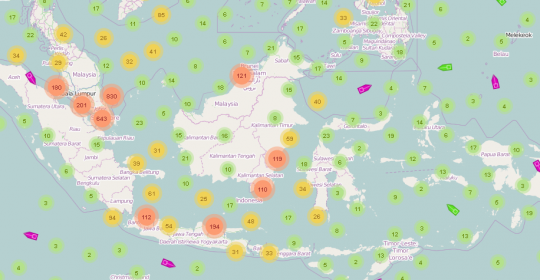
AIS
Technology AIS
The Automatic Identification System (AIS) is an automatic tracking system used on ships and by vessel traffic services (VTS) for identifying and locating vessels by electronically exchanging data with other nearby ships, AIS base stations, and satellites. When satellites are used to detect AIS signatures then the term Satellite-AIS (S-AIS) is used. AIS information supplements marine radar, which continues to be the primary method of collision avoidance for water transport. We use this technology to develop the system of AISSAT Port Prime and AISSAT Sat Prime. Information provided by AIS equipment, such as unique identification, position, course, and speed, can be displayed on a screen or an ECDIS. AIS is intended to assist a vessel’s watchstanding officers and allow maritime authorities to track and monitor vessel movements. AIS integrates a standardized VHF transceiver with a positioning system such as a GPS or LORAN-C receiver, with other electronic navigation sensors, such as a gyrocompass or rate of turn indicator. Vessels fitted with AIS transceivers and transponders can be tracked by AIS base stations located along coast lines or, when out of range of terrestrial networks, through a growing number of satellites that are fitted with special AIS receivers which are capable of deconflicting a large number of signatures. The International Maritime Organization’s International Convention for the Safety of Life at Sea requires AIS to be fitted aboard international voyaging ships with gross tonnage (GT) of 300 or more, and all passenger ships regardless of size. In providing the solution, we have partnership with ORBCOMM Inc., the first commercial Satellite AIS provider in the world. ORBCOMM has also trusted by US Coast Guard to provide the AIS data gather from the satellite.
Other Technology
-
M2M
Machine to machine (M2M) refers to technologies that allow both wireless and wired systems to communicate with other devices of the same type.

